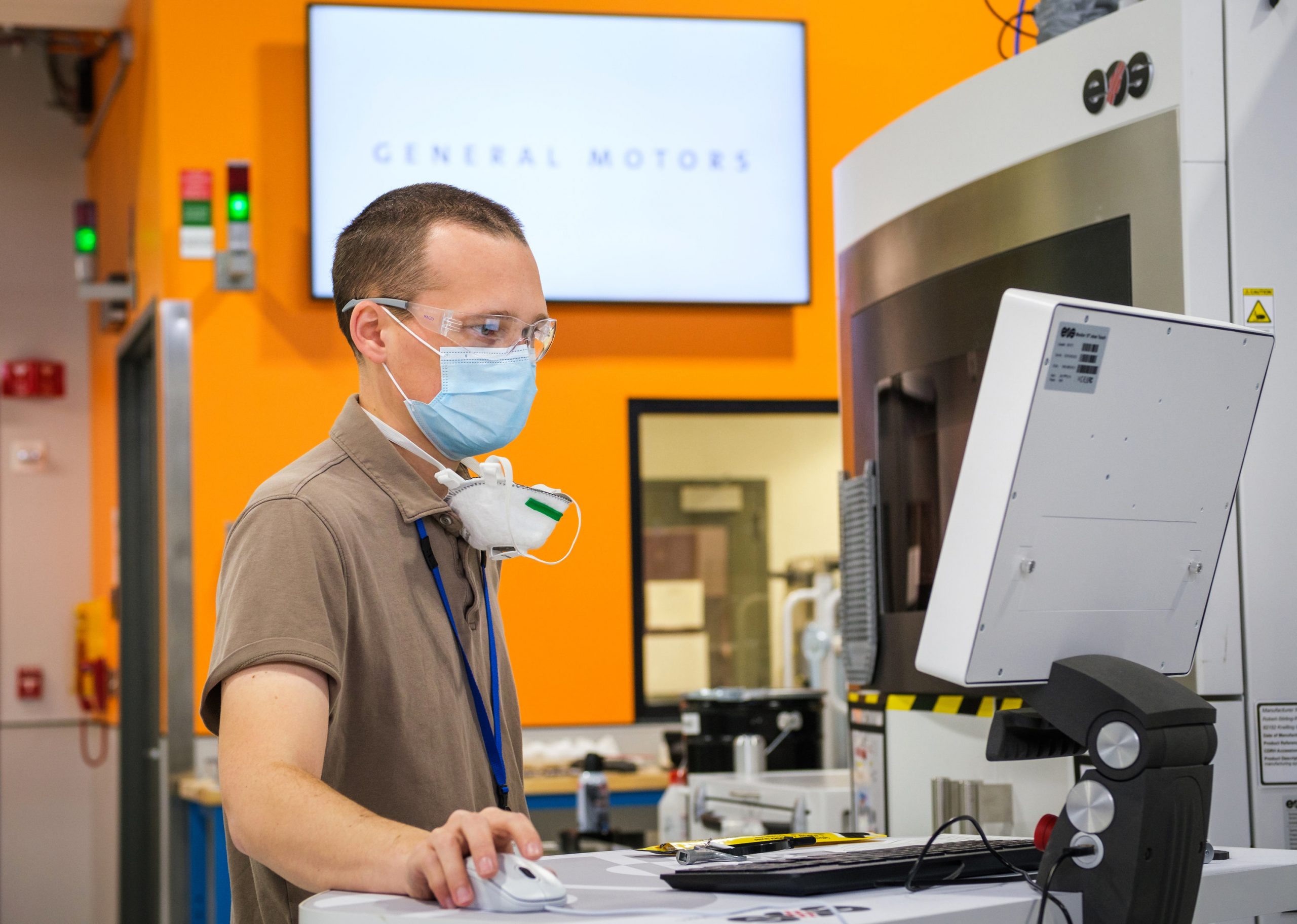GM is expanding its rapid prototyping and low-volume parts creation capacity.
3D printing, also known as additive manufacturing, is becoming the go-to tool in manufacturing when a quick or low-volume part is needed. GM uses additive manufacturing from its design phase to its prototype phase, as part of its manufacturing process, and even to create some low-volume parts used in production vehicles. This new facility near Detroit will enable GM to move faster and with more efficiency towards its goals.
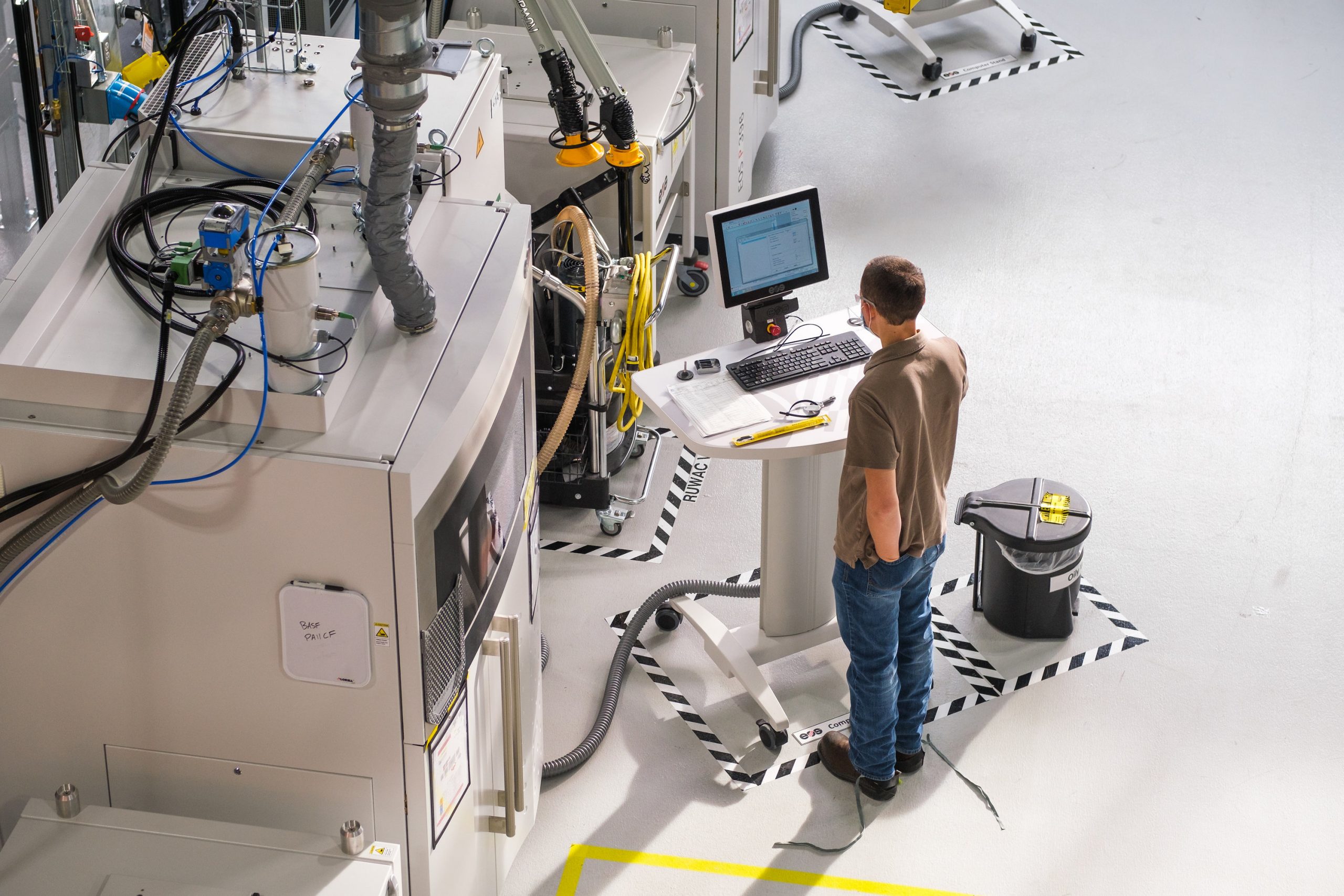
GM’s 15,000-square-foot Additive Industrialization Center (AIC) is a new ground-up facility exclusively dedicated to productionizing 3D printing technology in the automotive industry. The AIC is the product of GM’s expertise and increased investment in 3D printing over the last several years. The facility includes 24 3D printers. These printers can create polymer and metal components. GM’s additive design and manufacturing team leverages a number of different technologies at the AIC, including selective laser sintering, selective laser melting, Multi-Jet Fusion and fused deposition modeling.
“The core component of GM’s transformation is becoming a more agile, innovative company, and 3D printing will play a critical role in that mission,” said Audley Brown, GM director of Additive Design and Materials Engineering. “Compared to traditional processes, 3D printing can produce parts in a matter of days versus weeks or months at a significantly lower cost.”
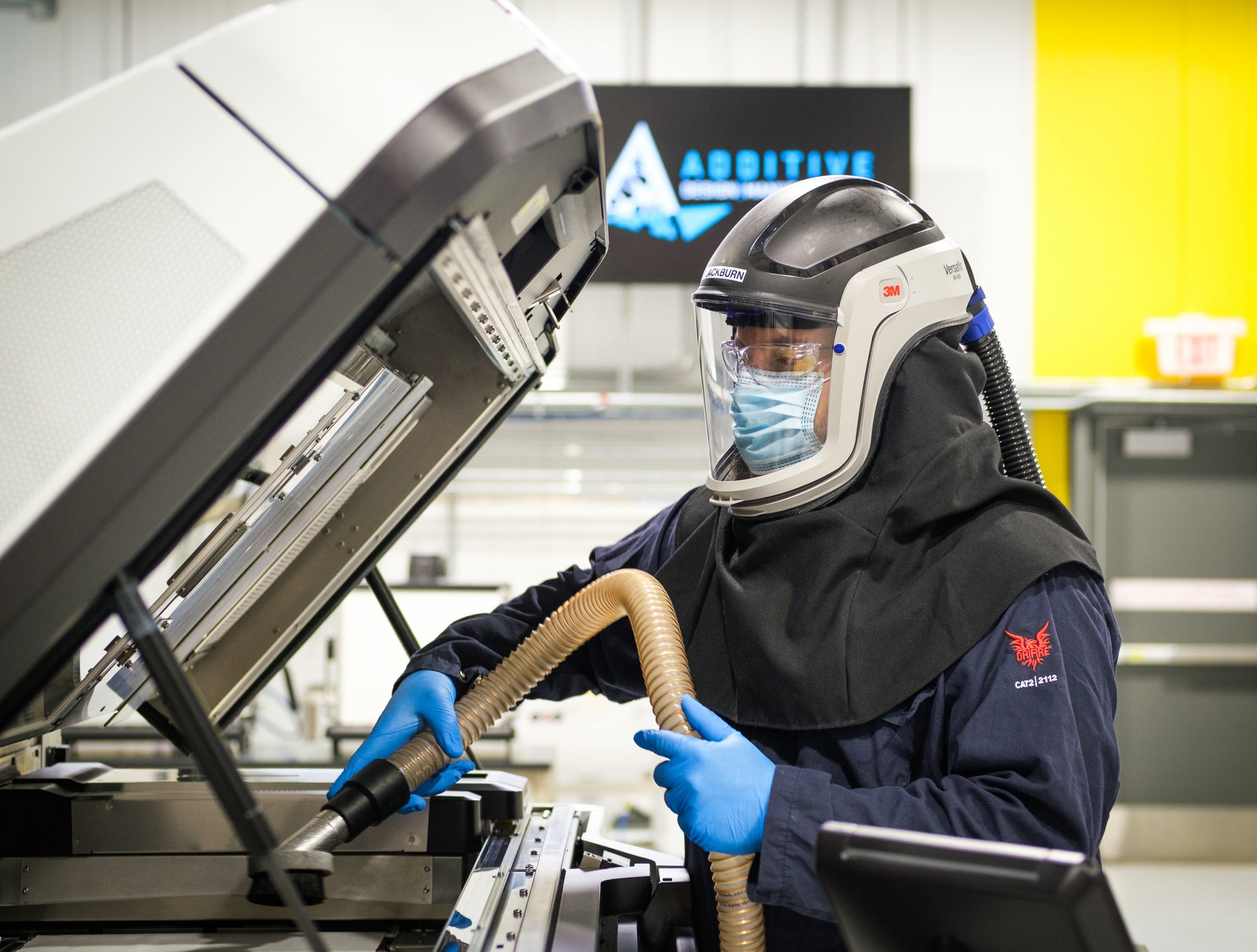
The AIC was conceived as a way to validate additive technologies and applications and to leverage this technology in GM’s evolving additive machinery and equipment. GM Ventures and GM’s R&D group are partners with the AIC. Each will work hand in hand with the AIC to adopt accelerated product development and tooling.
“GM is increasingly applying the benefits of 3D printing, from prototype development to manufacturing tooling and production vehicles,” said Ron Daul, GM director of Additive Manufacturing and Polymer Centers. “With the opening of the AIC, we’ll continue to accelerate adoption of this technology across the organization.”
GM’s usage of this technology will fall into three categories; Functional prototypes, manufacturing and tooling, and production.
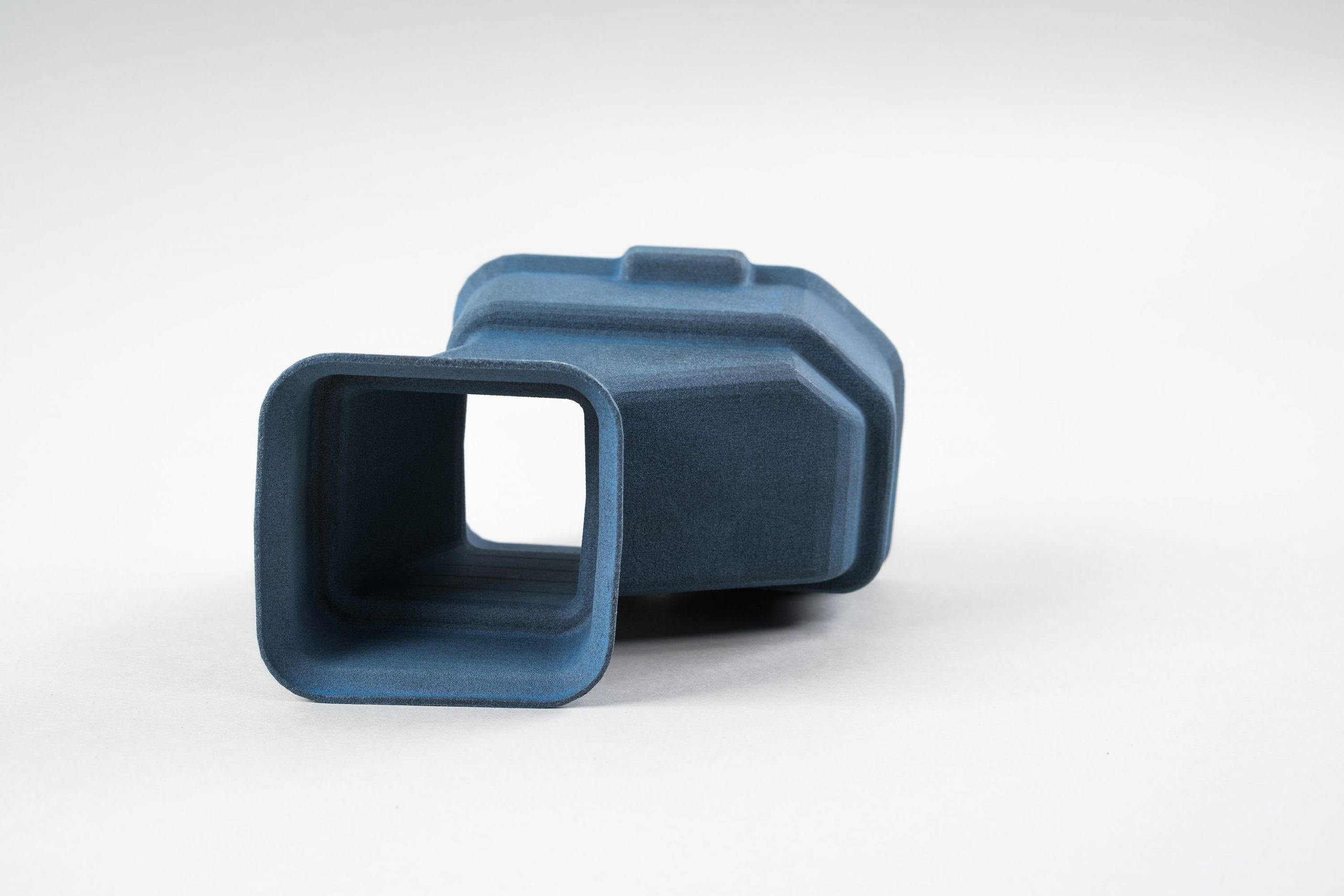
Prototypes
Like all modern manufacturing companies, GM has a history of using 3D-printed rapid prototypes to check form and fit. Many of the parts the AIC produces today are functional prototypes used on pre-production vehicles in various testing environments.
3D printing is helpful in making functional prototypes. The process can help eliminate expensive early tooling costs. Engineers themselves can create these components using computer-aided design drafting and finite element analysis software and the 3D printer. A machinist is not needed to make the part. As an example, GM points to the 3D printed brake cooling ducts used during the development of the Chevrolet Corvette. GM says 3D-printed ducts saved nine weeks of development and reduced costs by over 60 percent in the process.
“Many recent product programs have benefitted from 3D-printed prototype parts in one way or another,” said Brown. “Not only can these parts save time and money, but the team also uses 3D-printed applications during product development to overcome unexpected challenges in real-time.”
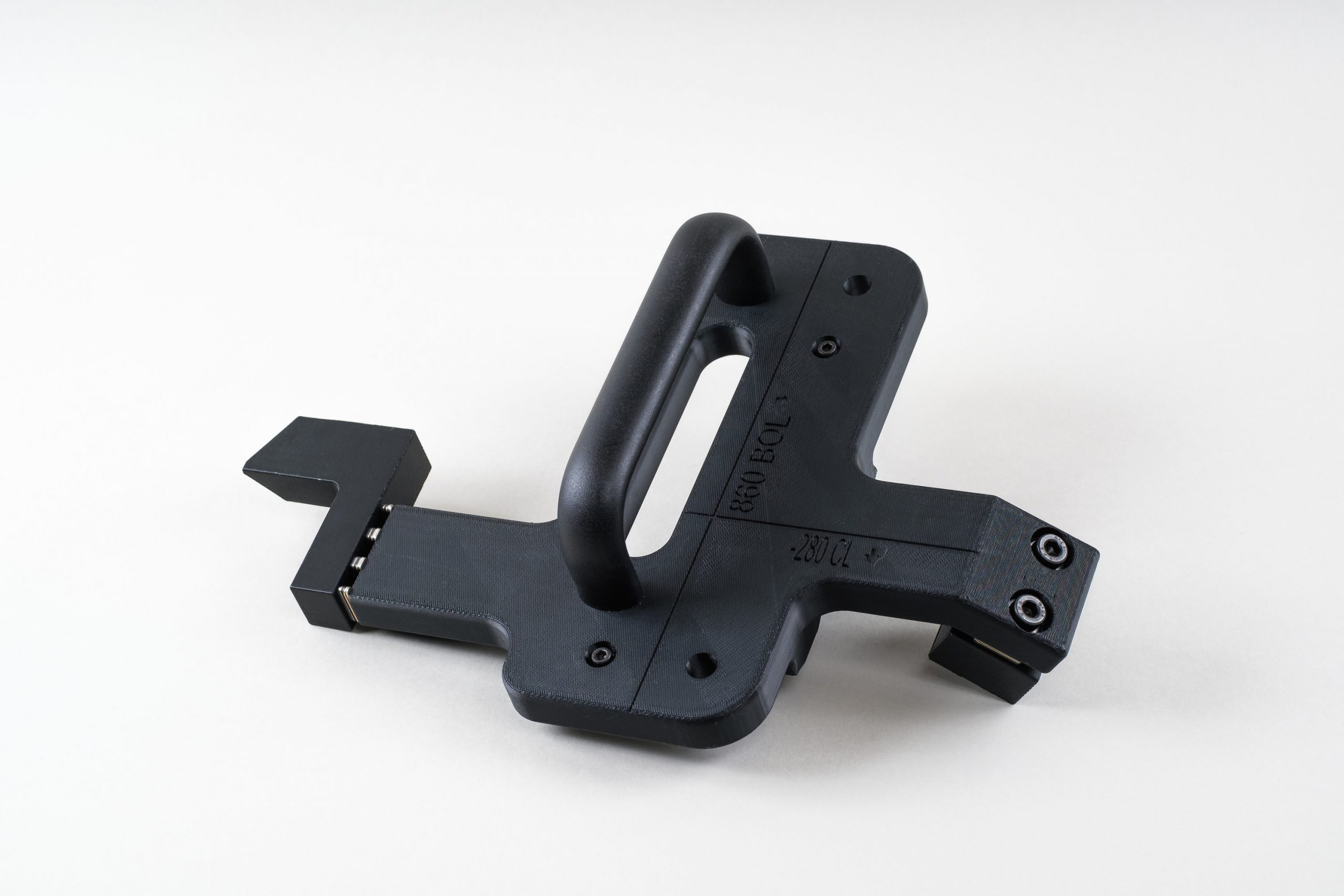
Manufacturing and Tooling
In addition to prototyped parts, GM is also producing a significant number of 3D-printed tools used for assembling vehicles. While preparing to launch GM’s all-new full-size SUVs, the team 3D printed nearly 100 hand tools for the body shop at Arlington Assembly. If made conventionally, these tools would be made of aluminum, weighing anywhere from 10 to 40 pounds. The new 3D-printed designs, constructed with a nylon carbon fiber composite, weigh as little as three pounds and virtually eliminated the lead time for ordering part changes.
“3D printing the body shop tools at Arlington saved more than two months in tooling construction,” said Daul. “This is at the critical time when we are changing the plant over to launch the new models. Ultimately, 3D printing helps accelerate new vehicle launches like our full-size SUVs.”
Production
Despite the many headlines we hear about 3D printed parts and even entire vehicles, the truth is, making parts in any volume is more cost-effective using other methods. However, in some low-volume part situations where the component is generally a shape and does not need to be a moving part with a wear interaction, 3D printing can make sense. GM recently announced the Cadillac CT4-V Blackwing and CT5-V Blackwing will be the first GM production vehicles to have 3D-printed parts, including an emblem on the manual shifter knob, an electrical harness bracket, and two HVAC ducts.
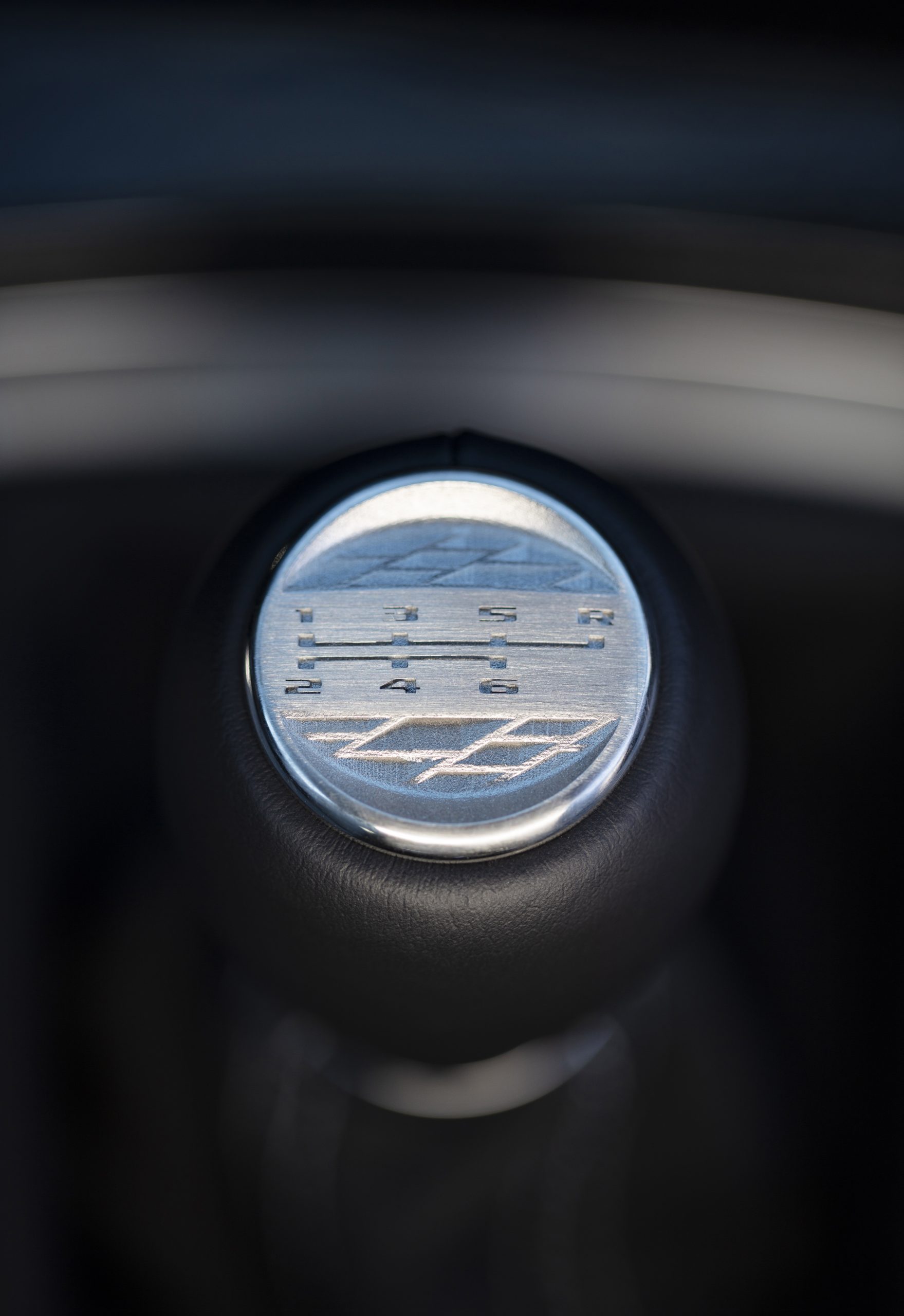
“The parts printed for the Cadillac V-Series models exemplify how we can use additive applications in the right place on the right program,” said Brown. “And, this is just the beginning. Ultimately, we see the potential for 3D-printed parts to be used in a wide variety of production applications – from greater personalization options for new-vehicle buyers, to unique accessories and reproductions of classic car parts.”

